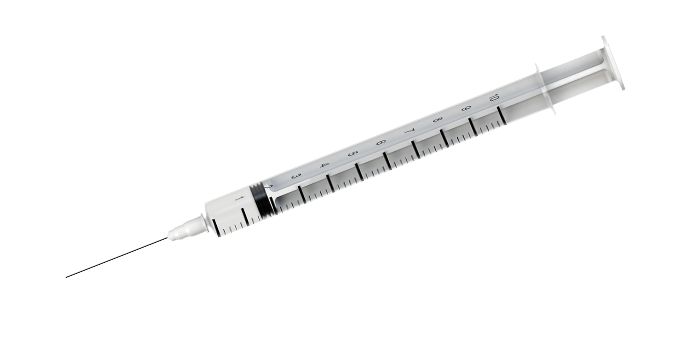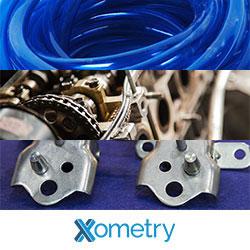Vaccines can easily become damaged or unusable at almost any step of the manufacturing and shipping process. Pharmaceutical companies wanting to maintain their margins and high standards of quality need to take measures to prevent error and contamination.
 How to Safely Manufacture and Ship Vaccines
How to Safely Manufacture and Ship Vaccines

Megan Ray Nichols | Schooled by Science
Vaccines are one most important medical advances in modern history. However, their manufacturing process remains delicate and challenging.
Vaccines can easily become damaged or unusable at almost any step of the manufacturing and shipping process. Pharmaceutical companies wanting to maintain their margins and high standards of quality need to take measures to prevent error and contamination.
Here are the practices pharmaceutical companies should follow if they want to safely manufacture and ship vaccines.
Challenges of Manufacturing and Shipping Vaccines
Vaccine manufacturing is often described as one of the most difficult industries, due to the challenges required by high quality standards and the length of the development and manufacturing process.
The R&D process for vaccines is slow and more involved than other products and is subject to strict regulations that require complex testing.
For example, Sanofi — a multinational pharmaceutical manufacturer — reports that 70% of its vaccine manufacturing time is devoted to quality tests that ensure effectiveness and purity. Proper vaccine testing is almost always essential in making sure the manufacturing process is safe and producing viable products.
Despite advances, vaccine manufacturing remains a complex and involved process. Bacteria or viruses need to be cultured and harvested, then purified, inactivated, added to a vaccine formulation and frozen. If any step doesn't go right, it can result in serious problems or nonviable vaccines. For example, if the bacteria or viruses in a vaccine aren't properly inactivated, they can remain highly pathogenic.
Failures in purification, formulation and freezing can also render vaccines nonviable or even harmful.
The lead time to produce a vaccine can also be quite long — from several months to as much as three years. This makes mistakes even more costly if not caught early on in the process.
Vaccine manufacturers also face significant difficulties in the supply chain. During the shipping process, many vaccines will need to be kept environmentally controlled. The wrong conditions can easily damage an entire shipment, leading to product loss or recall.
Ensuring Success When Manufacturing Vaccines
Proper sourcing of raw materials is essential in safely manufacturing vaccines. They can remain unchanged over their lifespans — some modern vaccines were developed in the 1940s and '50s and have remained largely the same. Changes in the manufacturing process generally require new rounds of regulations and testing. Finding a stable source of high-quality raw materials that will be able to meet the demand for a very long time can provide stability to the manufacturing process.
Even simple changes — like adopting a different type of vial or packaging — can be highly disruptive to the manufacturing process.
Ensure that all proper safety measures are followed — including contamination controls, segregation and sanitation. It's unwise to cut corners or make decisions based on lowering costs. New, untested technology and design methodologies can help reduce operating expenses, but may introduce new problems into the manufacturing process.
Hiring staff with in-depth technical knowledge is necessary.
Raw materials, especially those derived from animals, should be extensively tested. Otherwise, vaccine manufacturers run the risk of viral or microbial contamination. These materials should also be sourced from regions free of disease. For example, the FDA has previously advised manufacturers not to source certain raw materials from areas facing outbreaks of BSE, colloquially known as mad cow disease.
As with any industry, it can be a good idea to work with those who have experience. Purchasing high-quality equipment from manufacturers with extensive experience in the pharmaceutical industry and vaccine manufacturing can ensure your factory has the best materials for the job. Strong relationships with pharmaceutical equipment manufacturers can also provide you and your staff with additional knowledge and support.
Best Vaccine Shipping Practices
A temperature-controlled supply chain is essential, as most vaccines need to be kept cold from factory to clinic. Reliable cold transportation chambers can be a significant boon to manufacturers and shippers, since they can reduce the opportunities for vaccines to become temperature-compromised.
For some manufacturers, it may be worthwhile to adopt or adapt international guidelines on vaccine shipping, which provides structure and support to your vaccine supply chain. For example, the World Health Organization publishes its own standards on global vaccine packaging and shipping. While these regulations won't bind you unless shipping vaccines internationally, they can give you a sense of the kinds of challenges other manufacturers have faced in the supply chain.
Knowing about these difficulties and potential solutions can help you find ways to keep vaccines safe during the shipping process.
Keeping Vaccines Safe Through Manufacture and Shipping
Vaccines can be one of the most challenges pharmaceuticals to make, simply due to the complexity of the manufacturing process and the high standards they need to meet.
Each step of the manufacturing and shipping process can present new challenges, which makes expertise from staff and the companies you work with essential. Ensuring that your manufacturing process follows all proper safety measures is necessary for fabricating safe and viable vaccines.
In some cases, international standards that you are not bound by can provide useful frameworks for developing internal policies and predicting the challenges your vaccines may face during manufacture and shipping.
The content & opinions in this article are the author’s and do not necessarily represent the views of ManufacturingTomorrow
Comments (0)
This post does not have any comments. Be the first to leave a comment below.
Featured Product

